ENTRY DOORS / EXTERIOR DOORS
We have come to realize that exterior doors, no matter how expensive, are designed to make it easy for someone to break in. Call it “planned obsolescence”. The deadbolt lock anchors into a 3/4" thick pine jamb, and that's it. If someone (burglar, hostile neighbor, a crazy ex, someone who lost their key, firemen, police, an angry mob, a hungry bear, etc.) smashes the door real hard, the jamb (door frame) will splinter up-and-down in a long c-shape around the locks, and they get in. They almost never smash the double-pane tempered glass. We add a 1/2" or 3/4" piece of plywood behind both lock keepers, and that adds much strength to the lock area, and to the locks themselves. That's our standard installation, and we don't charge extra for it. Note: It still might not stop the bear.
30 x 80 Fiberglass Doors are in great demand, but only available via special order, which takes months. However, we are in possession of a brand new left inswing 9-Lite model, and we are selling it at a discount. See SPECIAL OFFER
We have an additional new business plan, starting in 2022, to serve customers that need special-order "short on height" doors, and not wait 3 to 4 months for them to arrive
CONFIDENT HOME REMODELERS
Serving Northern New Jersey and the Lehigh Valley
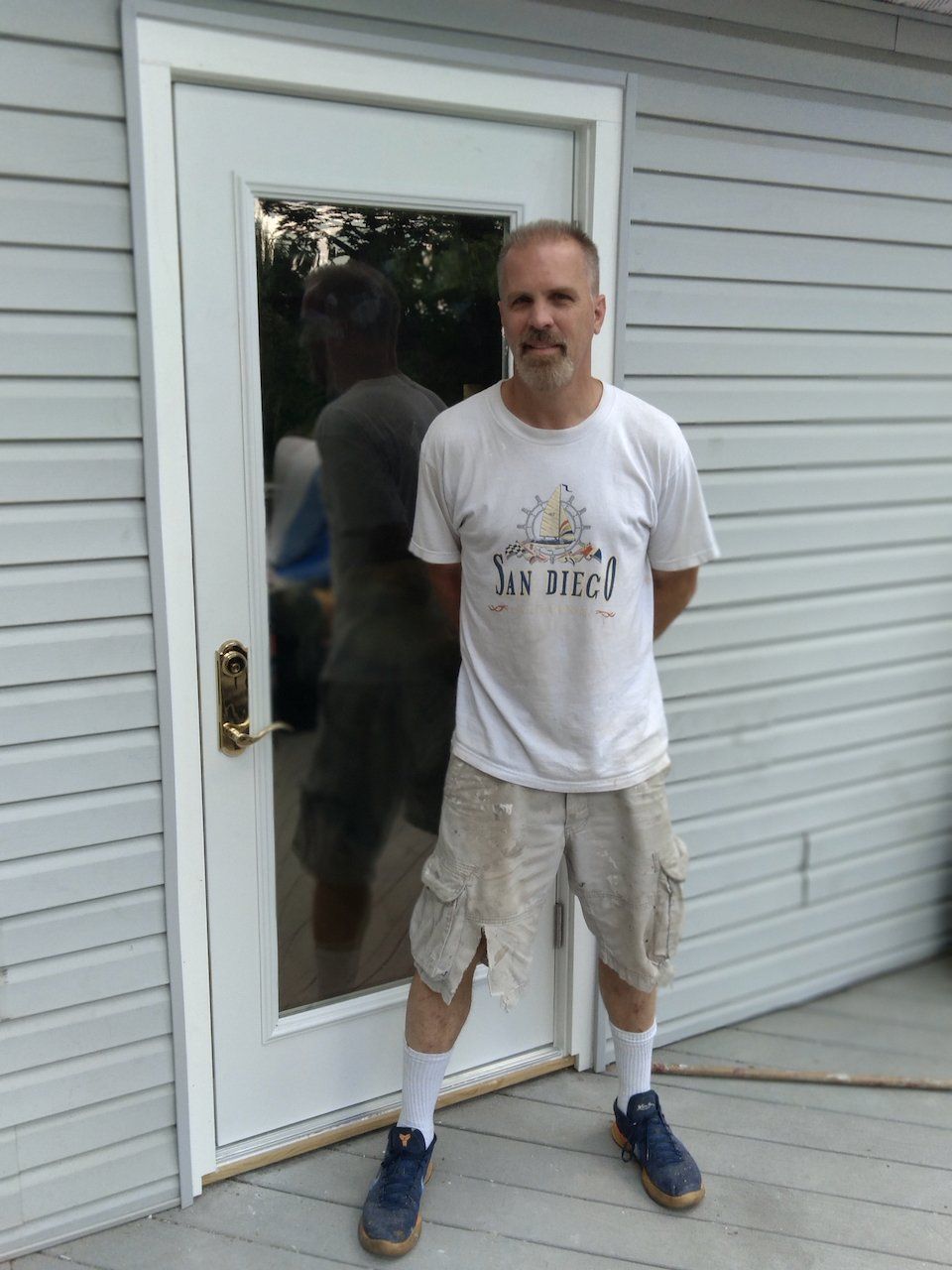
Slide title
Write your caption hereButton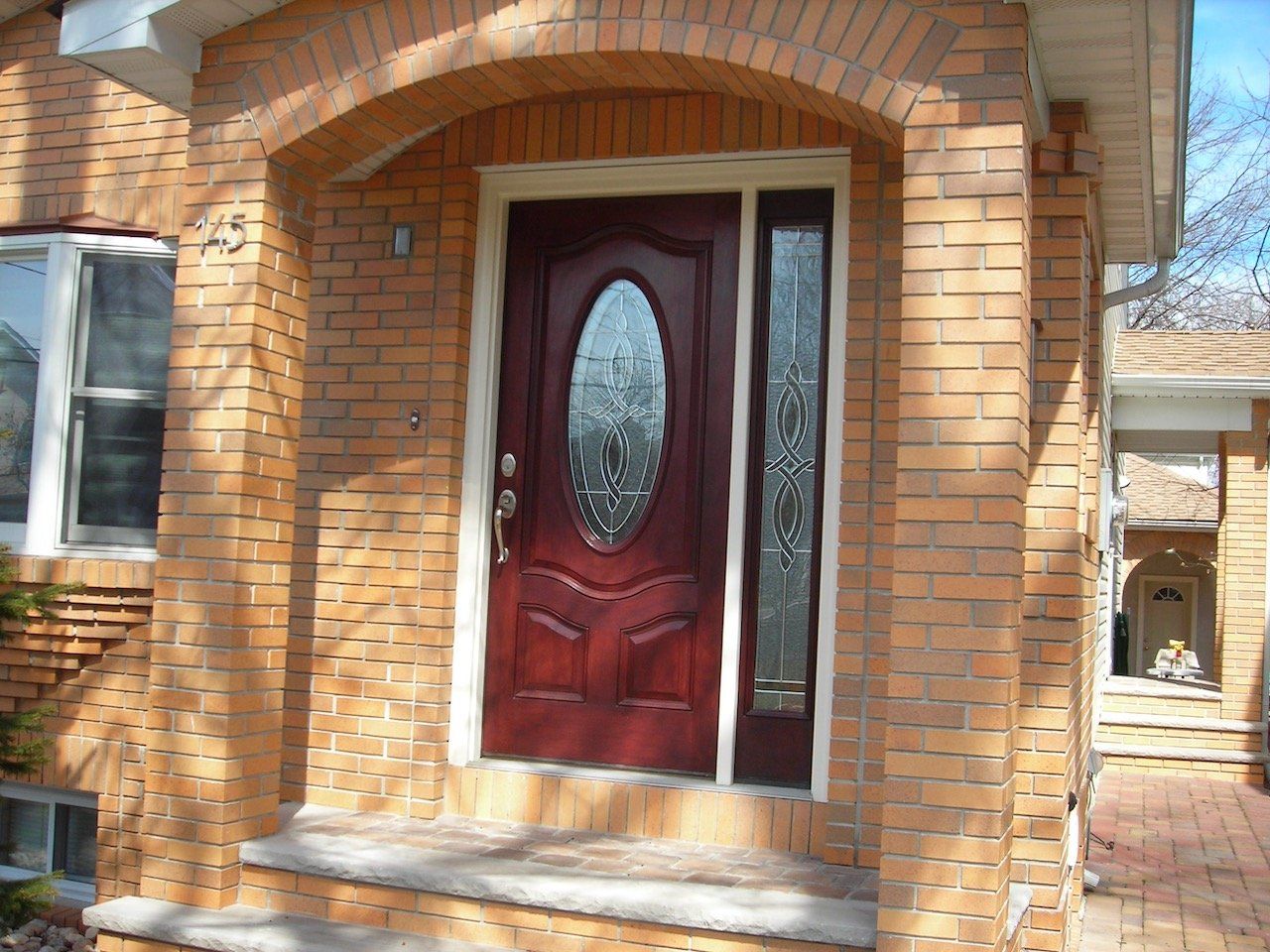
Slide title
Write your caption hereButton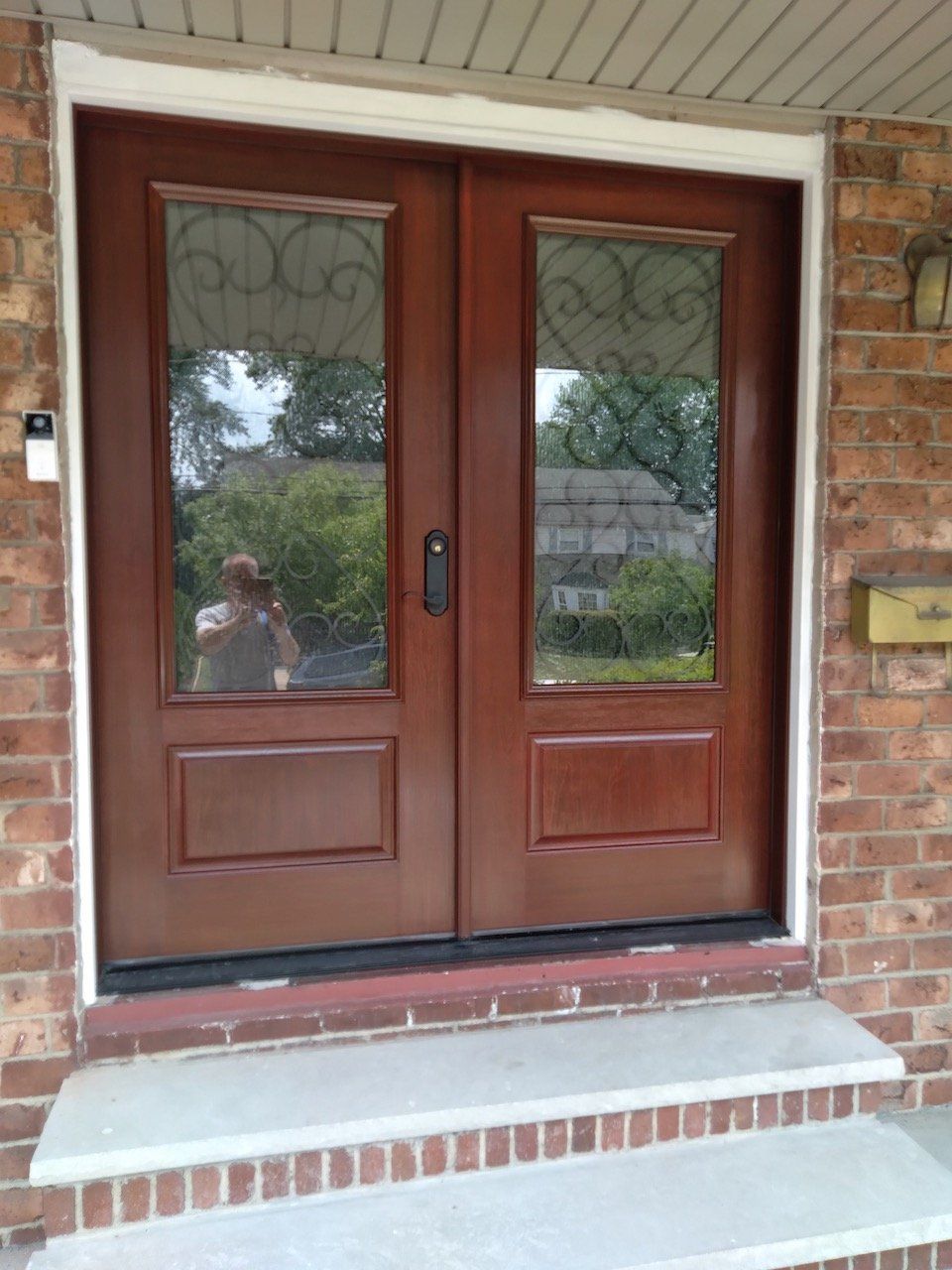
Slide title
Write your caption hereButton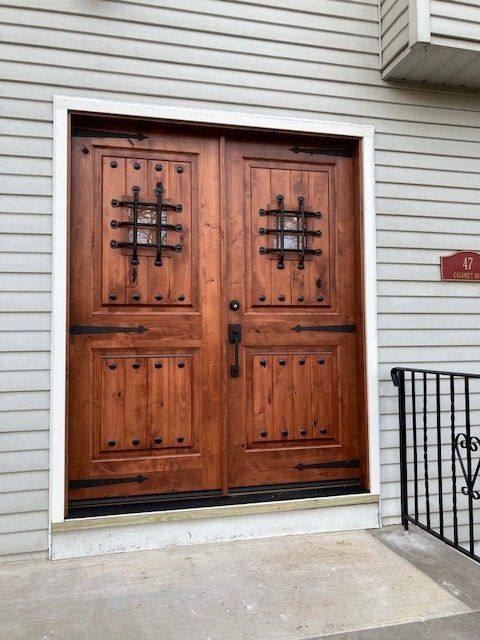
Slide title
Write your caption hereButton
Slide title
Write your caption hereButton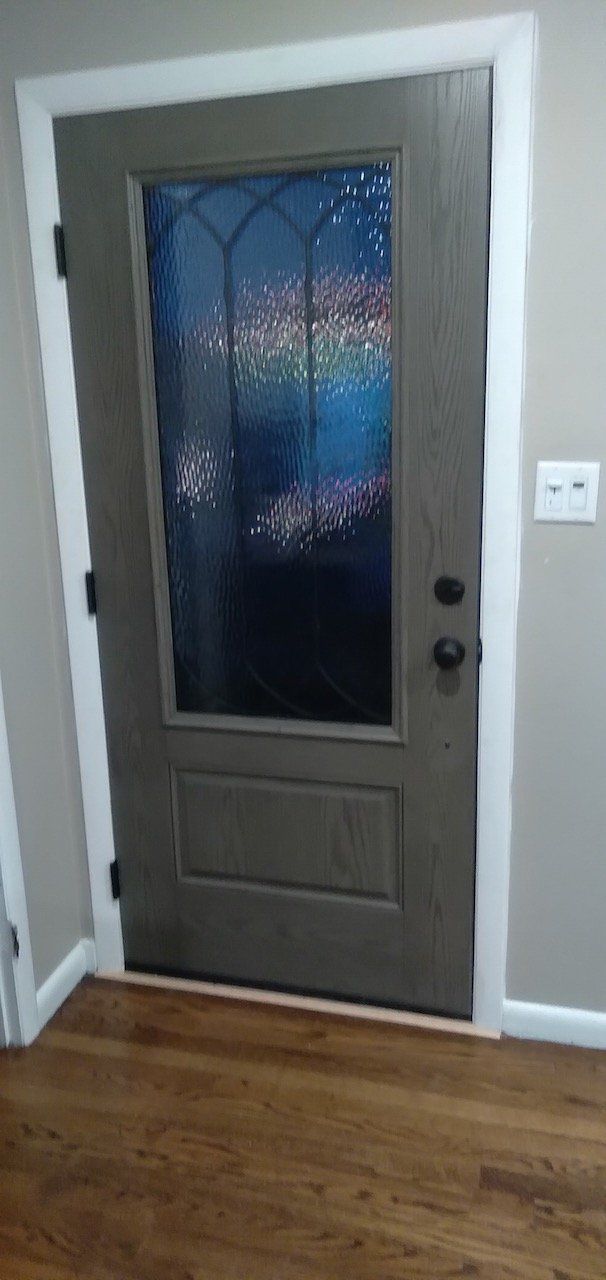
Slide title
Write your caption hereButton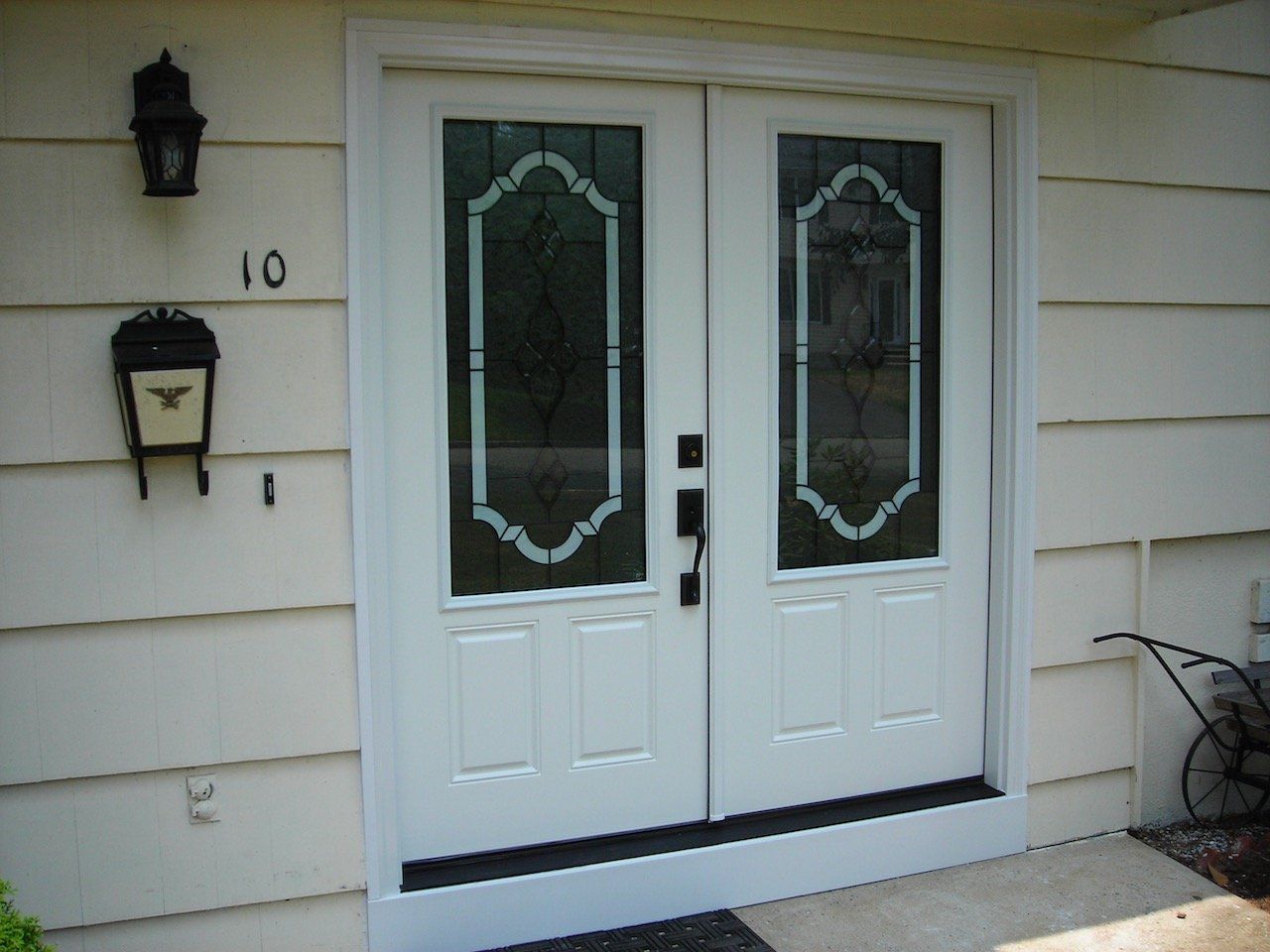
Slide title
Write your caption hereButton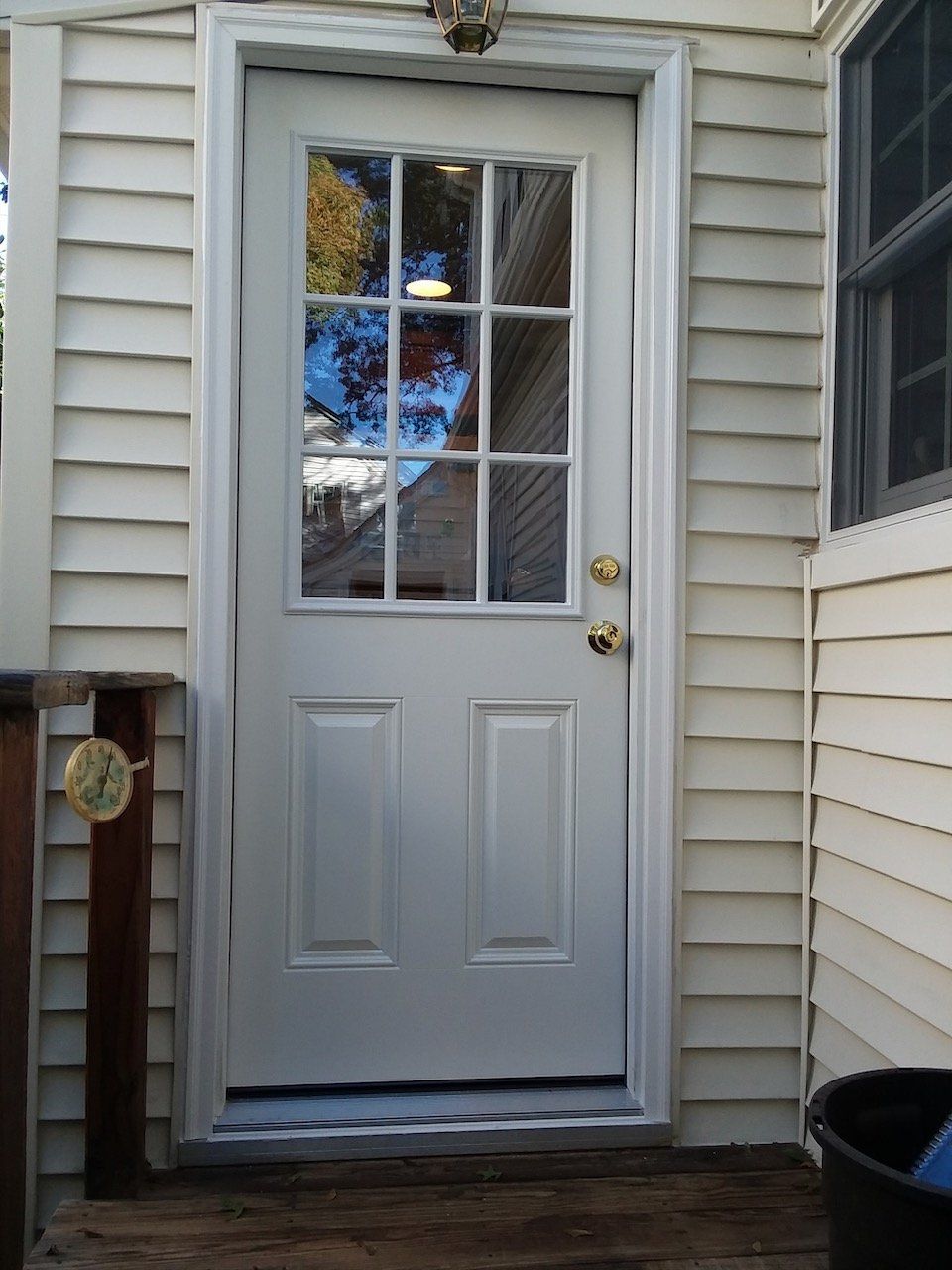
Slide title
Write your caption hereButton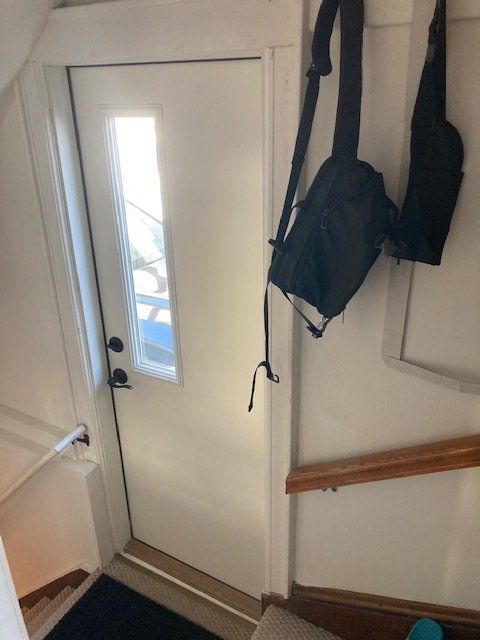
Slide title
Outswing door for side door in stairwell.
Button
Entry Doors are the core of our business here at Confident Home Remodelers
We install everything from the basic 30 x 80 door on the side of your house to creating or enlarging an opening for front door or patio door. Here’s some professional tips on the entry doors.
1. JELD-WEN (aka MMI) OVER THERMATRU – America’s two largest entry door manufacturers and Jeld-Wen and Thermatru. They are comparable brands in terms of quality, but Thermatru costs much more. You will pay at least 1/3 more for Thermatru. MMI is a wholly-owned subsidiary of Jeld-Wen. https://www.mmidoor.com/about-us They are producing doors much quicker than the main Jeld-Wen factory. Production time has become a major factor in our post-COVID economy, causing us to shift our recommendation to MMI.
I think Jeld-Wen is a tad better for three reasons: (a) Jeld-Wen weatherstripping is removable and can be changed out easily in the future, if needed. (b) The frame is much less likely to arrive bowed. (c) The Jeld-Wen Auralast jamb treatment prevents the exposed wood frame (jamb) from rotting, and it's only an additional $43.
All of the retailers that sell Jeld-Wen make much more profit on Thermatru, so they push customers that way. What's annoying and astounding is that the Jeld-Wen stain and paint colors available via Home Depot are NOT published in their brochures, and CANNOT be found online. It's only on the software in the Millwork Dept at Home Depot. This is a total marketing fail on their part because it is impossible for customers to fully research product selection for the higher-end doors that Jeld-Wen prefers to sell. I solved the problem for my customers by providing photographs of the stain and paint colors JELD-WEN STAIN & PAINT COLORS.
2. DON'T BUY FEATHER RIVER - Beware of the Feather River problem. Click this link to see images. The glue around the glass units will ooze out on hot days, and the stained exterior surface will fade and chip away much more quickly than other brands. These problems often begin within ONE YEAR of installation, and always within three years. It’s not worth saving 15% on price. Don’t get this brand, which sadly is the most common brand sold at Home Depot (yes, Home Depot offers much better brands). I replace several failed Feather River doors every year.
3. FIBERGLASS OVER STEEL - Steel rusts and dents, and is less energy efficient. Fiberglass is newer technology, and started to become more popular around 2000. Some brands have thinner steel than others. MMI steel is notoriously prone to denting. If you look at it wrong, it dings and dents. Steel and fiberglass entry doors have the same ¾” thick wood jambs (frame), and that’s what breaks when a door is kicked in. It’s never the steel or fiberglass unit, and it's rarely the glass.
3. FIBERGLASS OVER STEEL - Steel rusts and dents, and is less energy efficient. Fiberglass is newer technology, and started to become more popular around 2000. Some brands have thinner steel than others. Steel is notoriously prone to denting. If you look at it wrong, it dings and dents. Steel and fiberglass entry doors have the same ¾” thick wood jambs (frame), and that’s what breaks when a door is kicked in. It’s never the steel or fiberglass unit, and it's rarely the glass.
4. GLASS UNITS ARE SECURE - Modern double-pane doors are all tempered glass, and very strong. If they actually do break, they shatter into little diamond-like shards. Each pane is 5 times stronger than regular glass, and it’s double-pane. The glass units on a front door are the same strength as the glass units on a patio door, but people with patio doors only worry about someone breaking the glass on their front door. Older doors with thin glass are much more prone to break-ins. They need to be replaced for security reasons. We replace doors from break-ins all the time, and it’s always the frame around the lock set that splinters. Also, robbery-related break-ins are always via a side or rear door where there are less people watching.
5. DOORS OFF THE SHELF Vs. SPECIAL ORDER – Lowes has a wider selection, and they offer more fiberglass models than Home Depot. A 36 x 80 entry door can be purchased from low $300's (no glass) to the low $500's, depending on the glass package, if it’s one of the mass-produced models in stock. 32 x 80 are usually a bit more, and 30 x 80 even more. Don’t ask why, it’s all economy of scale reasons. As soon as you go special order, the cost is much more. If you need to special order, we recommend the Home Depot in Paramus, as the staff there are far more knowledgeable than their stores in Lodi or Hackensack. They won’t mess up your order. You can also go to Kuiken or another local lumberyard and order the same brands (Thermatru or Jeld-Wen), and pay about 20% more.
The are two levels of special order:
A. "Factory sizes" of 78" and 84" height are available, and the same door that costs $400 (36" x 80") is typically at least $850 for the other factory sizes. If you need to shave a half inch off a door (typical issue in a multi-story condo unit due to overlay wood flooring), it's much cheaper to go to 78" and get that factory size.
B. Non-Standard sizes are available through MMI for as low as 68". On April 22, 2023, the 32 x 80 9-lit available off the shelf at Home Depot is $389. On the same day, I priced a basic 32 x 80 9-lit entry door (cut-down to frame height of 68"), and MMI wanted $1759.69. And you have to wait 2 months for the special order. This abomination is the result of Jeld-Wen acquiring MMI in Feb, 2018. Prices have been spiraling up since then, and options are diminishing. Prior to 2018, MMI was making these special-order cut-down's in the $600's, while the basic 32 x 80 and 36 x 80 available at the stores were $275. People were furious at the $650 door in 2018, and now it's $1759.69, not including labor. It's just disgusting. Quite literally, Jeld-Wen has a virtual monopoly on cut-down doors due to the merger. Monopolies are inherently bad for capitalism. I wish I had the funds to start my own door factory.
We offer TWO solutions to this problem.
SOLUTION ONE: We will buy the 32 x 80 or 36 x 80 door off the shelf, and refabricate it. Meaning we will take it apart at our shop, cut the components, and re-assemble. It will be solid on the bottom, with the weatherstripping. I'll do this for $1500 (versus $1759 for the MMI special order), and we can do it right away, no 2-month wait. That's $1500 for door material and refabrication, plus installation labor (typically $500 to $900 depending on your house). If you've had a break-in, we can secure your opening ASAP, and for less money. However, this is only good for cut-down's up to 5 inches, because a greater cut-down will make the door-knob too low. see
REFABRIATION SERVICES
SOLUTION TWO: There is a door manufacturer that is still offering the "shorty" doors for less than MMI. This is the answer for cut-down's over 5", and for people who can wait just a bit longer for the door. It's still over $850 for a flat fiberglass door, and over $1200 with glass, but nowhere near that $1759. These doors are not available at Lowes, Home Depot, or any local lumberyard. I am not revealing the source online, and they still take a few weeks to come in. I can get them. Door-knobs will be a normal height.
6. 30 x 70 PROBLEM – another commonly needed size needed is “30 x 70” (meaning 31.5 x 71.5-unit size, to fit a 72” high rough opening). This size is for a garage side door, or for the bottom of the stairs under a Bilco cellar door. There are millions of them out there, mostly old and rotting. People research the cost, and then it sits and rots for another 10 or 20 years. See Point #5, above, for special orders.
7. 30 x 80 HAS NO DECORATIVE GLASS PACKAGES – Manufacturers think their door business is all new construction, which these days is all 36 x 80. They offer very few models in 30 x 80, and very few style choices. Few or no decorative glass packages. Most houses in New Jersey have 1 to 3 exterior doors that are 30 x 80. There’s a huge market out there for style options and decorative glass, and no manufacturer wants it. Both Home Depot (2018) and Lowes (2021) stopped stocking the enormously popular 30 x 80 9-Lit Fiberglass entry door. Now it's a monstrously expensive special order, or get it in Steel.
8. SCREWING UNDER WEATHERSTRIPPING
– With limited exceptions, we always screw the side jambs underneath the weatherstripping. It’s shoddy workmanship to screw through the exterior moldings, as if it’s a new construction window. If those moldings are changed in the future, the entire door will be loose in the opening.
9. OUTSWING DOORS
– There are some situations where it is better to get an outswing door. These are often side or rear doors, especially doors accessing kitchens or mudrooms. If you don’t ever need a storm door on an opening, it’s a good option. The pins are “non-removable”, and from a break-in standpoint, it can’t be kicked in because the thick side of the jamb is to the inside (not outside), and the screws to the 2 x 4’s are inside of the deadbolt screws (not the case on inswing doors)
10. CAULKING
– Never use Alex or Alex-Plus caulking on the outside. It says “interior and exterior” on the tube, but that’s nonsense. It’s cheap painters caulk that is great for the inside, and useless on the outside except to fill nail holes. A good exterior silicone or phenoseal is at least $5 a tube, it’s just part of the job. Yes, it’s paintable. We don’t cut costs. Caulking is actually an art that takes years to learn.
11. BUILDER’S SPECIAL FRONT DOOR WITH TWO SIDELITE WINDOWS
– Another common problem. Builders will always install budget doors that have 1” thick wood boards between the door and each sidelit window. It will have clear glass on the side windows (oooh, they can see in), and no low-e Argon energy package. A million-dollar house is sold with this kind of door that I wouldn’t install in Paterson. The gorgeous energy-efficient replacement door that you want always comes with those wood boards 1.5” thick, so the overall unit size is about one inch bigger on the width. This creates two problems: a. If you are lucky, the new door fits, meaning the builder was smart and framed the opening a bit on the wide side. I have a trick to determine, when I measure, if It will fit. Worst case scenario is the framing needs to be reframed or “adjusted”. Sometimes we can replace a 2x4 on each side (actual thickness is 1.5” – 1.6”) with pine boards 1 1/8” thick. Pine is much stronger than Douglas fir, so that carpentry trick works. b. The interior moldings that the builder installed will be short on width, and will need to be replaced.
12. TERMITES
– The most common place for termites to enter your house is UNDER THE FRONT STEPS. Most houses have masonry foundations 2 to 3 feet high to deter termites, so that’s the only one place where they can get from the soil to the house framing without being exposed to the air. Lots of times the framing under the front door is rotten from termites exterminated decades ago, and there will be sub-sill framing repairs. Termites are everywhere, but Bergen County is the termite capital of New Jersey, and Teaneck is the termite capital of Bergen County.
13. NEVER USE THE 2” SCREWS PROVIDED FOR STORM DOOR PUMPS
– We throw them away. We use 3.5” or 4” exterior screws to install the bracket for the storm door pump mechanism. And we’ll pre-drill for them first. We want them deep into the stud framing, so when the wind blows on that storm door, it’s less likely to split the wood of the jamb (aka frame). The storm door manufacturers provide these thick 2” screws with white heads. They barely scratch at the 2 x 4’s. Not one storm door manufacturer has figured out this problem. They need a good lawsuit.
14. USE LONG SCREWS FOR LOCK KEEPER
- A similar problem to above. We want the screws for the lock keepers to go into another piece of wood, for added strength. We’ll stick a ½” or ¾” piece of plywood between the door jamb and the 2 x 4’s. That’ll catch the screw from the lock keeper. And we’ll use longer screws
15. DEADBOLT LOCK KEEPER PROBLEM
– Doors jambs come standard with a hole carved out for a 2.25” long deadbolt lock keeper. These days more and more lock sets come with 2.75” long deadbolt keeper. The nicer the lock, the more likely it is 2.75” long. The door manufacturers are way behind on this problem, and we have to carve out larger openings. If you are special-ordering the door, address this during the order process. Meaning, pick your lock first, and see the size. Some manufacturers will let you special order 2.75” for the longer keeper.
16. HOUSE WALL IS OUT OF SQUARE
– The door must be at or very close to 90 degrees vertical for it to open and close right, and not have gaps at the top and bottom. Lots of houses have walls that are slightly tilting. The problem is least common for Cape Cod houses. Carpenters at that time who were very talented. The door MUST be vertical, so we’ll have to shift it to the outside, and special rip-cut extension jambs to resolve any gaps to the inside molding.
17. ROT-PROOF JAMBS
– If you have no storm door and the opening is exposed to rain, the wood jambs (frame) of the door are prone to rotting. A “fiberglass door” still has wood jambs unless you special order composite jambs. Jeld-Wen offers an “Aura-Last) chemical treatment to prevent rotting, it adds a mere $30 or so to the cost. Well worth it.
18. BRICK MOLDINGS, YES OR NO
– Doors come standard with exterior moldings called “brick moldings” that go up to the edge of the bricks or the j-channel for the siding. For some installs, it’s better to order them loose. If the space is wider than the brick molding (true about 2/3 of the time), they are useless and don’t need to be ordered. You’ll need 1.25” thick wood or composite white boards. Azek is one brand.
19. OLD CHESTNUT INTERIOR MOLDING
– Most houses built in the 1920’s and 1930’s in our area have original chestnut interior molding with an end-cap, and they used extra-large nails to install it. This wood is no longer available for exact match replacement, due to the blight that killed these trees. The trim is now old and dry and splintery, and next to impossible to remove and reinstall without damage. If you have finely stained chestnut trim, we may opt to install from the outside.
20. DOOR BEFORE SIDING WORK
– The siding guy will say “you can always install the doors or windows later, it doesn’t matter.” Wrong answer, it matters a lot. He just wants you to sign his contract, now. It’s always better and cheaper to do the door first, especially if he’s going to install aluminum coil wrap that will be in our way. (Btw, we hate aluminum coil wrap, it always fades and dents. Even if the rest of the house has aluminum coil around the windows, get the composite white boards around your entry doors and garage doors.)
GO WITH CONFIDENT HOME REMODELERS, YOU CAN BE “CONFIDENT” THAT YOUR DOOR IS SAFE AND SECURE
We bring pride and passion to every project that we undertake, with a professional team of designers, project managers and tradespeople.











